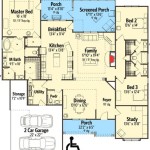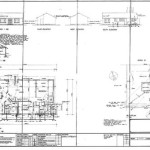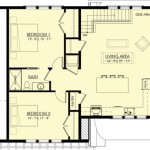How To Get A Floor Plan
Acquiring a floor plan is a crucial first step for a multitude of projects, ranging from home renovations and interior design to real estate marketing and property management. A floor plan provides a visual representation of a building's layout, including the dimensions of rooms, the placement of walls, doors, windows, and even fixed appliances. Understanding the available methods for obtaining a floor plan and the associated costs and benefits of each will ensure that the chosen approach aligns with the project's needs and budget.
The method used to obtain a floor plan will depend on several factors, including the age of the property, the availability of existing documentation, the required level of detail, and the financial resources allocated to the task. Each method offers varying degrees of accuracy, cost, and time investment. Therefore, careful consideration of these factors is paramount.
Accessing Existing Floor Plans
One of the simplest and most cost-effective ways to obtain a floor plan is to check for existing documentation. This approach involves exploring several potential sources that may already possess the information needed. The success of this method relies on the availability and accessibility of historical records.
The first place to look is with the property owner. Often, homeowners will retain original blueprints or floor plans from when the house was built or last renovated. These documents might be stored in a safe place, such as a filing cabinet, attic, or storage unit. If the current homeowner is not the original owner, they may have received these documents from the previous owners during the sale of the property.
Local government agencies, such as the building department or planning office, often maintain records of building permits and construction plans. Accessing these records may require a visit to the agency's office or submitting a request online. There may be a fee associated with retrieving these documents, and the availability of records can vary depending on the age of the building and local record-keeping practices. It is important to note that these plans may not reflect any subsequent renovations or alterations made to the property after the original construction.
If the property is part of a homeowner's association (HOA) or condominium association, the association might have copies of the original floor plans or architectural drawings. Contacting the HOA management company or reviewing their records could yield the desired information. Similar to government records, these plans may not reflect later modifications.
For newer properties, especially those built by large-scale developers, the developer might still have copies of the floor plans available. Contacting the developer's sales office or customer service department could be a fruitful avenue. They might be willing to provide a copy of the original plans for a fee or as a courtesy, especially if the property is still under warranty.
If the property was recently listed for sale, the real estate agent who handled the transaction might have created a floor plan as part of the marketing materials. Reviewing online listings or contacting the real estate agent directly could potentially provide access to a floor plan that has already been created. However, it is crucial to verify the accuracy of these plans, as they may not always be drawn to precise scale.
Creating a Floor Plan Manually
If existing floor plans are unavailable, creating one manually is a viable option, particularly for smaller properties or when a high degree of precision is not essential. This method involves physically measuring the dimensions of the building's interior and then using those measurements to draw a floor plan, either by hand or using basic drafting software.
The necessary tools for manual floor plan creation include a measuring tape (preferably a laser measuring tool for greater accuracy and ease of use, especially when measuring long distances), graph paper or architectural drafting paper, a pencil, an eraser, and a straight edge or ruler. A notebook for recording measurements is also highly recommended.
Begin by sketching a rough outline of the building's perimeter on the graph paper. Then, systematically measure the length and width of each room, paying close attention to the placement of doors, windows, and walls. Accurately record all measurements in the notebook. It is essential to work methodically, room by room, to avoid omissions or errors.
Once all measurements have been taken, begin transferring them onto the graph paper, using a consistent scale (e.g., 1/4 inch = 1 foot). Carefully draw the walls, doors, windows, and any other fixed elements, such as fireplaces or built-in cabinets, according to their measured dimensions and locations. Double-check all measurements and calculations to ensure accuracy.
While manual floor plan creation is a cost-effective option, it requires patience, attention to detail, and a reasonable understanding of basic drafting principles. The accuracy of the resulting floor plan will depend heavily on the precision of the measurements and the care taken in transferring those measurements to the drawing. This method may not be suitable for complex layouts or when a high degree of accuracy is required.
Increasingly, apps on smartphones or tablets are available that assist in manual creation of floor plans, often using the device's camera and augmented reality (AR) to take measurements. These apps still require physical walking through of the space, but can improve the ease and accuracy of the process. Researching and comparing a few of these apps is advised before committing to one.
Hiring a Professional Floor Plan Service
For projects that require a high degree of accuracy, detailed information, or professional presentation, hiring a professional floor plan service is often the best option. These services employ trained professionals who use specialized equipment and software to create precise and accurate floor plans. While this method is generally more expensive than manual creation, it offers significant advantages in terms of accuracy, time savings, and the quality of the final product.
Architects are qualified professionals who can create floor plans as part of a larger architectural design project. They possess expertise in building codes, structural considerations, and aesthetic design. Hiring an architect is particularly beneficial when the project involves significant renovations, additions, or alterations to the building's structure.
Interior designers can also create floor plans as part of their services. They focus on the interior layout and design of the space, taking into account factors such as furniture placement, traffic flow, and aesthetics. Hiring an interior designer is ideal when the project involves reconfiguring the interior space or creating a new interior design scheme. They will often provide 3D renderings in addition to the 2D floor plan.
Professional floor plan service companies specialize in creating floor plans for a variety of purposes, including real estate marketing, property management, and interior design. These companies typically employ laser scanning technology and computer-aided design (CAD) software to create accurate and detailed floor plans. They can also provide additional services such as 3D modeling, virtual tours, and furniture layouts.
When selecting a professional floor plan service, it is important to consider their experience, qualifications, and the technology they use. Obtain quotes from multiple providers and compare their prices, services, and turnaround times. Review samples of their previous work to assess the quality of their floor plans. Ensure that the service provider is insured and licensed, if required by local regulations.
A key benefit of using a professional service is the accuracy and speed of the process. Laser scanning technology, for example, can capture precise measurements quickly and efficiently, minimizing the potential for human error. CAD software allows for easy editing and modification of the floor plan, ensuring that it meets the specific requirements of the project. Furthermore, professional floor plans are typically presented in a visually appealing and easy-to-understand format, which can be particularly important for marketing purposes.
The cost of hiring a professional service will vary depending on the size and complexity of the property, the level of detail required, and the specific services included. It is important to obtain a detailed quote from the service provider before commencing the project to avoid any unexpected costs. While the initial investment may be higher than other methods, the benefits of accuracy, time savings, and professional presentation often outweigh the cost.

How To Draw A Floor Plan The Home

Floor Plan Creator And Designer Free Easy App

Create A Floor Plan Of Your House Instructables

How To Manually Draft A Basic Floor Plan 11 Steps Instructables

Free Floor Plan Creator Edrawmax

Floor Plans Learn How To Design And Plan

Draw Floor Plans With The Roomsketcher App

How To Draw A Floor Plan Live Home 3d

Should I Get A Floor Plan Mccann Properties

Floor Plan Design Tutorial








